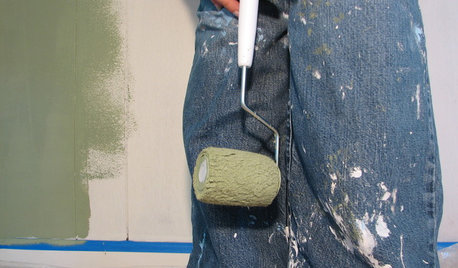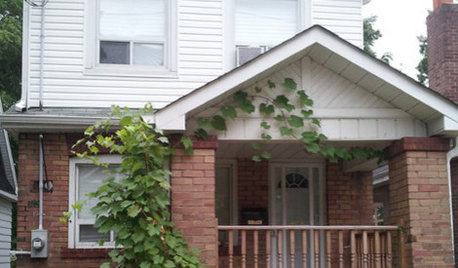Please help - I think I am infested!!!
stone_garden
15 years ago
Related Stories

BATHROOM WORKBOOKStandard Fixture Dimensions and Measurements for a Primary Bath
Create a luxe bathroom that functions well with these key measurements and layout tips
Full Story
EXTERIORSHelp! What Color Should I Paint My House Exterior?
Real homeowners get real help in choosing paint palettes. Bonus: 3 tips for everyone on picking exterior colors
Full Story
SMALL SPACESDownsizing Help: Think ‘Double Duty’ for Small Spaces
Put your rooms and furnishings to work in multiple ways to get the most out of your downsized spaces
Full Story
PAINTINGHelp! I Spilled Paint on My Clothes — Now What?
If you’ve spattered paint on your favorite jeans, here’s what to do next
Full Story
ENTRYWAYSHelp! What Color Should I Paint My Front Door?
We come to the rescue of three Houzzers, offering color palette options for the front door, trim and siding
Full Story
HOME OFFICESQuiet, Please! How to Cut Noise Pollution at Home
Leaf blowers, trucks or noisy neighbors driving you berserk? These sound-reduction strategies can help you hush things up
Full Story
GARDENING GUIDESGreat Design Plant: Ceanothus Pleases With Nectar and Fragrant Blooms
West Coast natives: The blue flowers of drought-tolerant ceanothus draw the eye and help support local wildlife too
Full Story








morz8 - Washington Coast
rhodyman
Related Professionals
Canton Landscape Architects & Landscape Designers · Fillmore Landscape Architects & Landscape Designers · Towson Landscape Architects & Landscape Designers · Wareham Landscape Architects & Landscape Designers · Mount Wilson Landscape Architects & Landscape Designers · Jackson Landscape Contractors · Bedford Heights Landscape Contractors · Bloomington Landscape Contractors · Concord Landscape Contractors · Florham Park Landscape Contractors · Golden Landscape Contractors · Melrose Park Landscape Contractors · Wheat Ridge Landscape Contractors · Chicago Ridge Landscape Contractors · East Cleveland Gardeners & Lawn Carejean001
rhodyman
stone_gardenOriginal Author
rhodyman